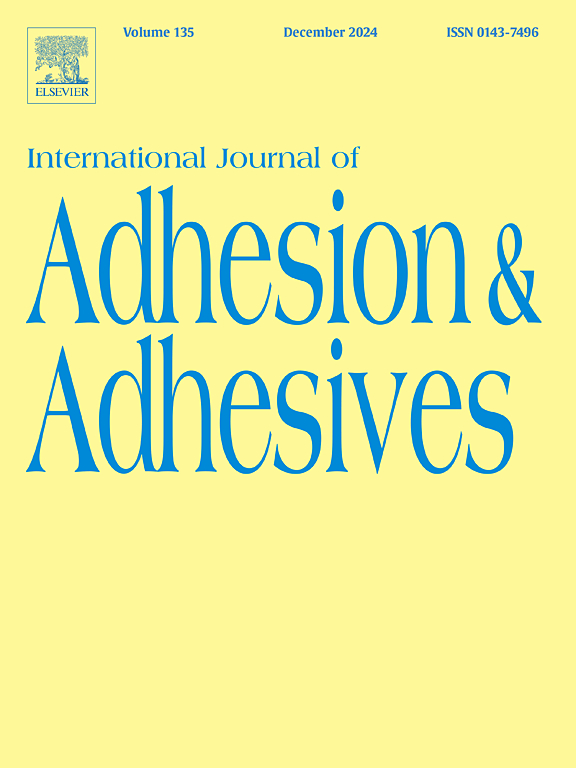In-situ double polymerization to build IPN structural melamine resin coating with excellent structural toughness and intrinsic hydrophobicity
IF 3.2
3区 材料科学
Q2 ENGINEERING, CHEMICAL
International Journal of Adhesion and Adhesives
Pub Date : 2024-12-13
DOI:10.1016/j.ijadhadh.2024.103925
引用次数: 0
Abstract
Melamine-formaldehyde resin (MF) is a typical thermosetting amino resin. The cured MF film usually shows some defects such as autogenous-shrinkage, easy brittle fracture, and easy to swell and crack, so it is difficult to use MF as paint or coating directly. In this study, a novel melamine-formaldehyde resin oligomer (dMFO) which has two reactive groups (-CH2OH and -CH=CH2) was prepared by introducing hydroxypropyl acrylate (HPA) in the synthesis process of MF. The dMFO is then used as a coating resin and cured by thermal-assisted double polymerization (named as IDTC) to construct the dMFO coating with an in-situ interpenetrating polymer network (IPN). The result shows that the dMFO coating exhibits good structural toughness and intrinsic hydrophobicity just like an impact resistance of 110 mm, abrasion resistance of 1.4 mg/100R, and adhesion of 6.32 MPa. Furthermore, the cured dMFO coating showed an obvious intrinsic hydrophobicity, with a water contact angle of 92.3°and water resistance time of 8.5h. From the synthesis of dMFO, curing process and properties of the coating, it is shown that the reasonable IPN structure of dMFO coating is constructed by in-situ interpenetration of thermoplastic macromolecular segments in the thermosetting three-dimensional network structure. The developed dMFO coating technology is of great significance in promoting a practical application of MF in the field of coating and painting.
求助全文
约1分钟内获得全文
求助全文
来源期刊

International Journal of Adhesion and Adhesives
工程技术-材料科学:综合
CiteScore
6.90
自引率
8.80%
发文量
200
审稿时长
8.3 months
期刊介绍:
The International Journal of Adhesion and Adhesives draws together the many aspects of the science and technology of adhesive materials, from fundamental research and development work to industrial applications. Subject areas covered include: interfacial interactions, surface chemistry, methods of testing, accumulation of test data on physical and mechanical properties, environmental effects, new adhesive materials, sealants, design of bonded joints, and manufacturing technology.
 求助内容:
求助内容: 应助结果提醒方式:
应助结果提醒方式:


